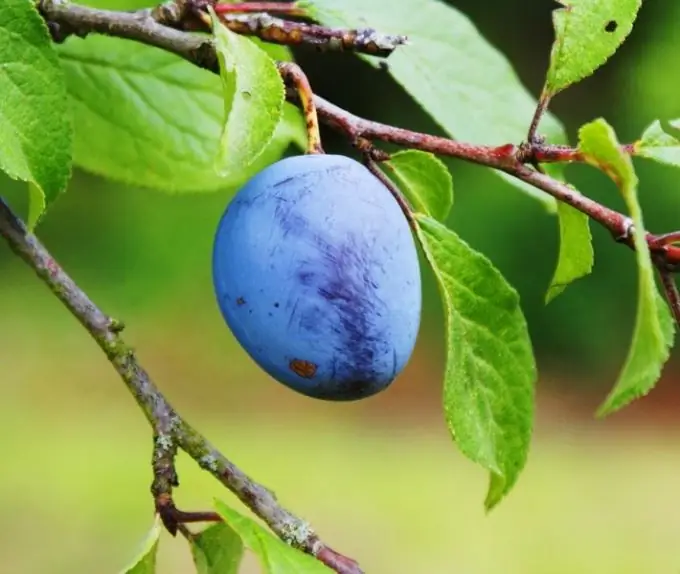- Author Nora Macey [email protected].
- Public 2023-12-16 10:17.
- Last modified 2025-01-23 08:47.
Plum trees, no less than other fruit crops, require the careful attention of the gardener. With natural growth (lack of regular pruning), the crown may thicken excessively. Young trees with strong growth often develop forks where large branches can break off. Fruit twigs of neglected plums die off faster, which sharply reduces their productivity. All of these disadvantages can be prevented by applying formative pruning.

It is necessary
- - sharp pruner, lopper;
- - garden variety.
Instructions
Step 1
Perform the first pruning when planting a young seedling. Leave only one leading shoot (future trunk). Prune branches extending from the leader by one-third so that they do not compete with the main shoot. Try to keep the branches at a steep angle from the main trunk. Failure to comply with this requirement often leads to faults in large branches.
Step 2
Do a second pruning next year in the spring. Cut the center conductor (main trunk) by two-thirds if its growth is strong. Remove all shoots below the main selected skeletal branches "on the ring" (as close to the trunk as possible). Shorten the growth of the previous year by one third, so that the upper bud looks outward, and not inward the crown. Cut out all root shoots as they emerge. If this is not done, the growth of the tree will weaken.
Step 3
Form the plum in the years to come. As soon as the main conductor reaches a height of 2.5 meters, it must be removed completely. Avoid the formation of multiple leaders. Remove thickening (criss-crossing), dry, and improperly growing (inside the crown) branches. Use a lopper or small hacksaw to remove large branches.
Step 4
Perform anti-aging pruning on old and neglected trees. Spread out the crown of the plum, leaving some strong and healthy skeletal branches. Remove all broken, dry and diseased branches “on the ring”. Cover the cuts with garden pitch. After heavy pruning, fertilize the tree well and mulch the tree trunk circle.
Step 5
In subsequent years, carry out regulating pruning for old and young plum trees. Prune vigorous branches so that the crown remains symmetrical and fairly sparse.






